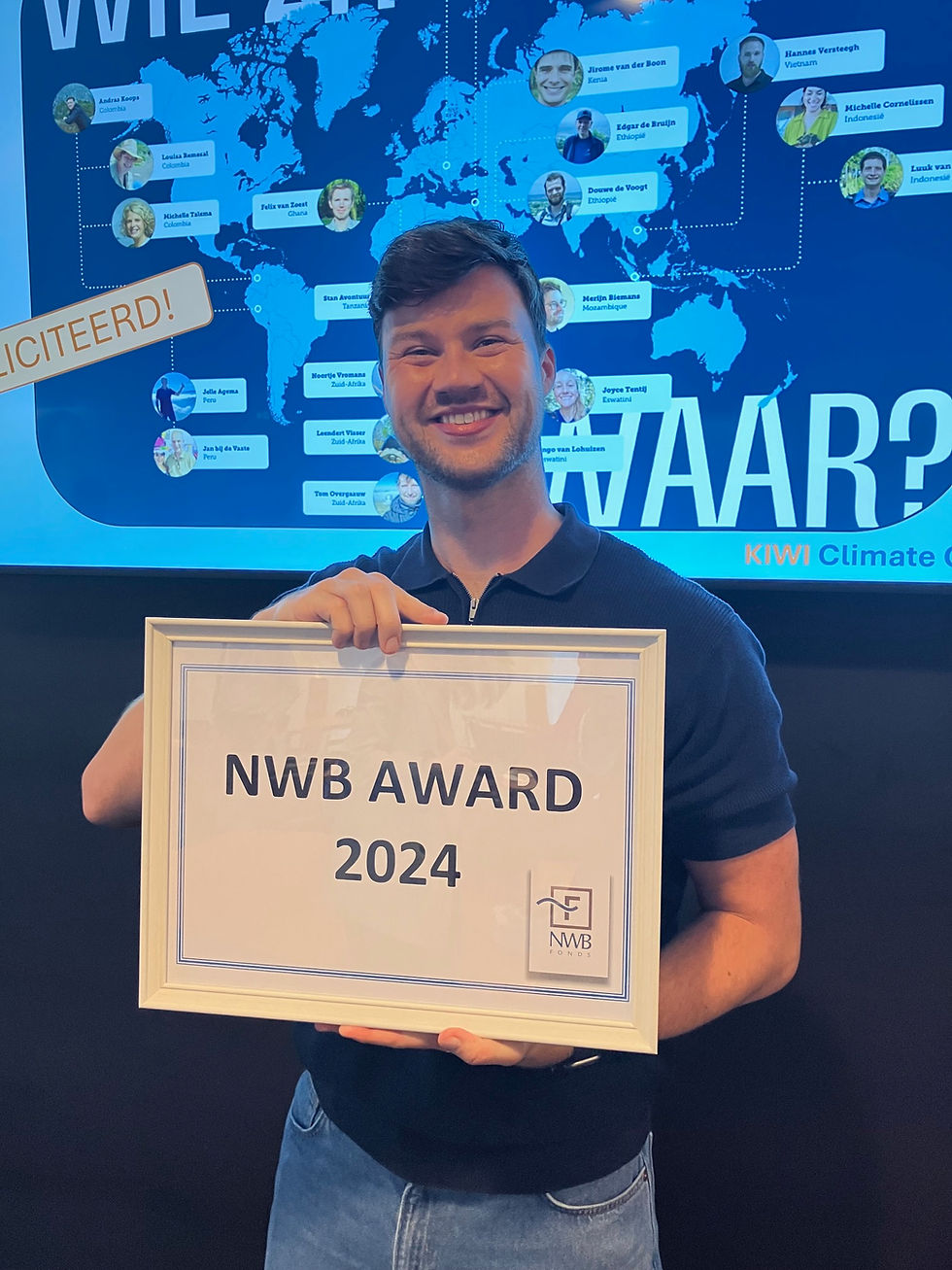Natural wastewater treatment in Ethiopia
- mwierda6
- Aug 5, 2023
- 3 min read

Sewage water between the houses
The city of Adama, like many other cities in Ethiopia, struggles with poor sanitation in the so-called "condominiums." These are housing projects where the government tries to accommodate the ever-growing population moving to urban areas. These condominiums consist of apartment blocks that are not connected to the sewage system; wastewater is collected in septic tanks buried around the houses. These tanks must be regularly emptied by vacuum trucks to prevent them from overflowing. The condominiums are mostly inhabited by Ethiopians with limited financial means. For them, the cost of emptying the septic tanks is often unaffordable. In practice, this results in tanks overflowing frequently: sewage water flows between the houses—where children play—and leaks into nature and nearby lakes. The residents suffer from foul odors, health issues, and see their environment deteriorating.

The polluted water from the overflowing septic tank flows into the surroundings.
Local Natural Solution
There is a significant need for a solution to this problem. Connecting these condominiums to the sewage system is a long-term process, and in the meantime, residents and the surrounding environment face daily issues due to the overflowing tanks. The NWB Fund is supporting a Nature-Based Solution: constructed wetlands. In such a constructed wetland, a septic tank is still used to collect solid waste, but the rest of the wastewater flows into a basin where a combination of specific local plants, stones, and gravel is used to purify the water. After purification, this water is not drinkable but can be used, for example, to water plants (at the roots). This method of capturing and purifying water ensures that the polluted water does not end up in nature. The wetlands are micro-ecosystems that increase biodiversity by attracting insects and birds and also create a cooler and greener environment in the middle of the hot city.

In Adama, a wetland is being constructed together with Wereld Waternet and WASTE from the Netherlands, with the local NGO BBBC taking the lead in the construction. BBBC previously worked with WASTE and other Dutch partners to establish two wetlands in Shashemene, another large city in Ethiopia. In April, the team working in Adama visited these wetlands. We spoke to the residents of the condominiums about their experiences with the wetlands: what went well and what can be improved when constructing the wetland in Adama?
Multiple Benefits
Both the residents of the condominiums and the municipality were very positive about the effects of the constructed wetlands. These benefits include:
Financial: The costs of emptying the septic tanks were high in the past. After the wetlands were established, the tanks need to be emptied much less frequently. Additionally, one of the plant species in the wetland (napier grass) can be harvested by residents and sold as animal feed. This provides enough income to empty the septic tank of the wetland and still have money left to invest in the vegetable garden, which is also being set up by the residents next to the wetland. This garden can then be irrigated using the purified water from the wetland. Residents will receive training on how to do this safely.
Social: The issues of overflowing septic tanks (odor, diseases) not only affected the residents of the condominiums themselves but also those living in the lower-lying areas where the dirty water flowed. This often led to conflicts. Since the wetlands were established, this issue no longer occurs.

Physical: Children used to play in the sewage water from the overflowing tanks, which of course posed health risks. One of the interviewees said: “When I got my child, I knew I needed to leave this unhealthy place. I was looking for possibilities to do so all the time, but it seemed impossible. Now, with the constructed wetland, I really do not want to leave anymore.” Where sewage water once flowed, children can now play outside safely. A woman with asthma, who had to leave her house due to the poor air quality worsening her condition, was able to return.
Environmental: The wetlands not only make the area cleaner but also more beautiful and cooler. This is further supported by the fact that the money from harvesting the napier grass can be invested in improving the living environment: “When I look out my window, I see beautiful flowers, which makes me so happy.”
All of these benefits are encouraging the municipality, the water company, and the residents of various condominiums in Adama to eagerly implement their own wetlands. With support from the NWB Fund, work is underway to make this happen. We are also taking the lessons learned from Shashemene into account: we are developing a way to more easily (and safely) access the purified water.

One of the already constructed wetlands in Shashemene. The clean water is accessed by lifting a heavy concrete lid. We aim to improve this at the wetland in Adama.



